Investing
The Evolution of US Army Automatic Rifles from the BAR to the XM250
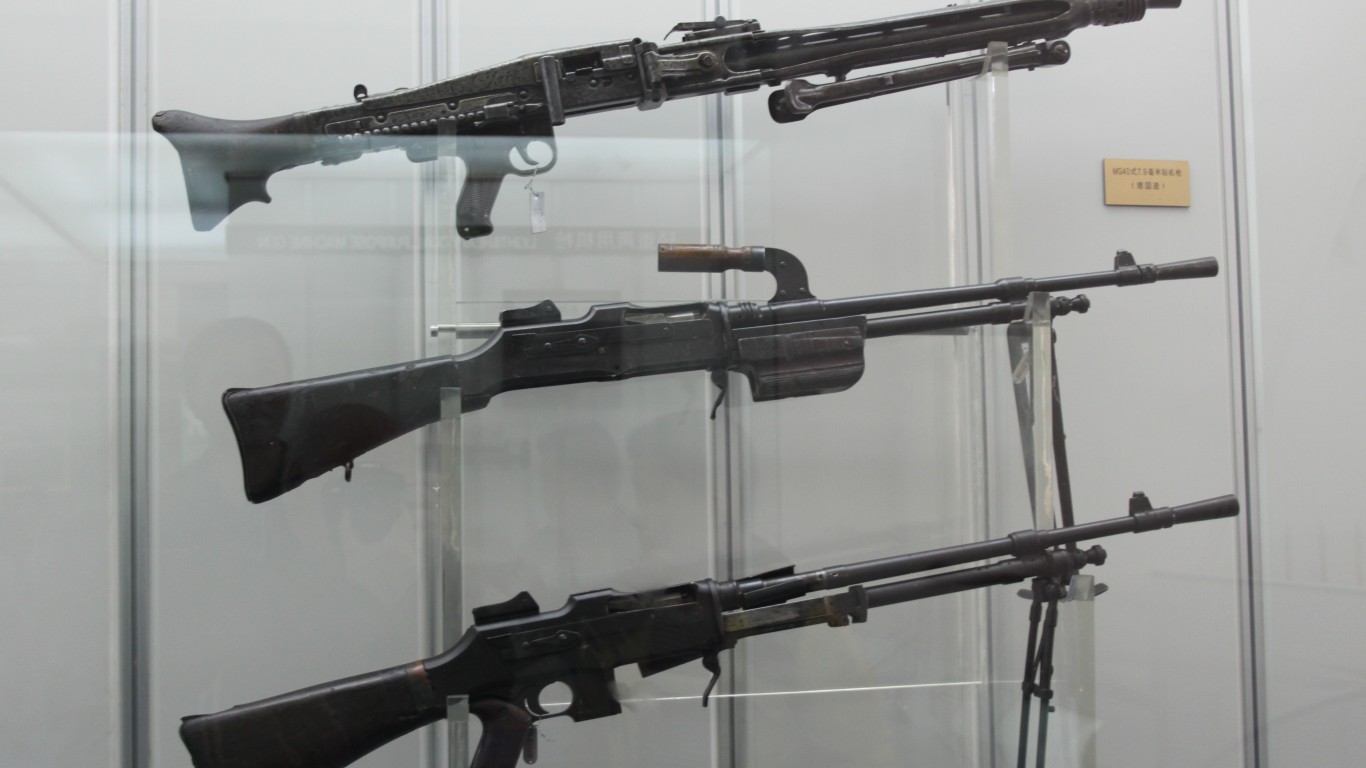
Published:

Fully automatic weapons – defined as those capable of firing more than one shot with a single trigger pull – are tightly regulated in the United States. Only automatic weapons made before May 1986 are approved for civilian ownership, and possession of one is contingent upon approval from the Bureau of Alcohol, Tobacco, Firearms, and Explosives.
The most common reasons Americans cite for owning firearms include protection from crime, target shooting, and hunting. For these purposes, automatic weapons offer little practical advantage over other firearm types. The same cannot be said for automatic weapons in the military, however.
Used in combat to maximize the odds of a hit and suppress enemy troop movement, fully-automatic firearms, such as machine guns, sub-machine guns, and assault rifles, have been widely used by the U.S. Army for more than a century.
Using data from the military report Survey of U.S. Army: Uniforms, Weapons, and Accoutrements, 24/7 Wall St. identified the automatic weapons that have been most commonly used by the U.S. Army since World War I. Firearms are listed in the order in which they were adopted by the Army, from the oldest to the newest.
While this list is focused on infantry weapons, such as carbines and rifles with fully-automatic and burst fire capabilities, we also included heavier machine guns that are widely used in the Army, such as the M60 and M249 SAW.
Many of the firearms on this list had a short lifespan, used for only a few years before being retired. The Thompson submachine gun, for example, was first adopted by the Army in 1938. However, by the end of World War II, less than a decade later, it was replaced by the M3 “Grease Gun.” Others, meanwhile, like the M60 machine gun and variations of the M16 rifle, lasted for decades in the U.S. Army before being replaced. (These are the 17 guns Americans used to win World War II.)
Our list also includes the two newest firearms in the U.S. Army – the M7 rifle and M250 light machine gun. Made by Sig Sauer, the company that won the contract in 2022, these two automatic weapons will eventually replace the M4 carbine and M249 SAW. (These are the guns in the U.S. Army arsenal.)
Click here to see the automatic weapons used by the US Army over the years.

11. Browning Automatic Rifle (BAR)
> Entered service in: 1918
> Est. rate of fire: 500-650 or 300-450 rounds per minute
> Magazine: 20 round box
> Chambered for: .30-06 Springfield ammunition
> Notable conflict(s): World War II
[in-text-ad]

10. M1 Thompson Submachine Gun (and variants)
> Entered service in: 1938
> Est. rate of fire: 650-920 rounds per minute
> Magazine: 20 or 30 round box, 50 or 100 round drum
> Chambered for: .45 ACP ammunition
> Notable conflict(s): World War II
9. M3 Submachine Gun “Grease Gun” (and variants)
> Entered service in: 1942
> Est. rate of fire: 350-400 rounds per minute
> Magazine: 30 round box
> Chambered for: .45 ACP ammunition
> Notable conflict(s): World War II
8. M2 Carbine
> Entered service in: 1945
> Est. rate of fire: 850-900 rounds per minute
> Magazine: 30 round box
> Chambered for: .30 caliber ammunition
> Notable conflict(s): Korean War
[in-text-ad-2]
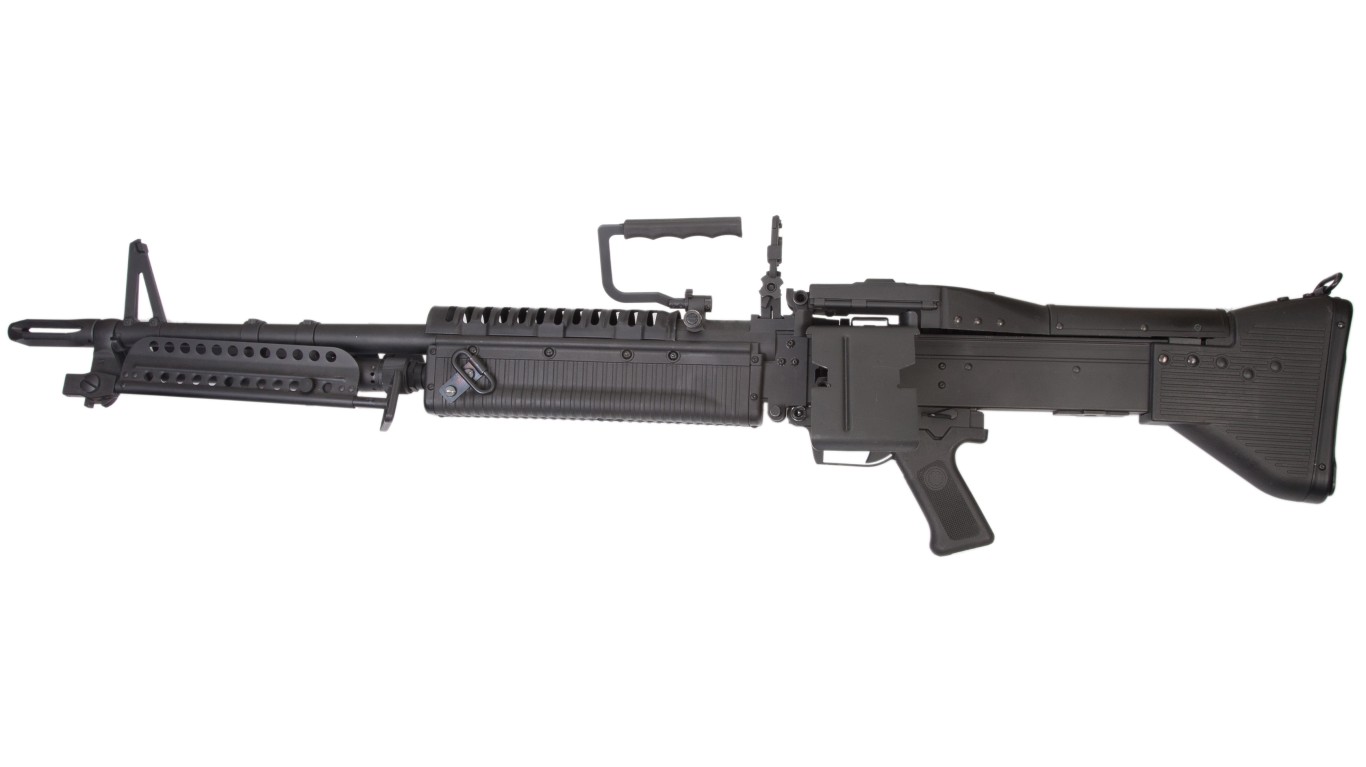
7. M60 Machine Gun
> Entered service in: 1957
> Est. rate of fire: 550-650 rounds per minute
> Magazine: 200-1,000 round disintegrating belt
> Chambered for: 7.62Ã51mm NATO ammunition
> Notable conflict(s): Vietnam War
6. M14 Rifle
> Entered service in: 1959
> Est. rate of fire: 650-920 rounds per minute
> Magazine: 20 round box
> Chambered for: 7.62Ã51mm NATO ammunition
> Notable conflict(s): Vietnam War
[in-text-ad]
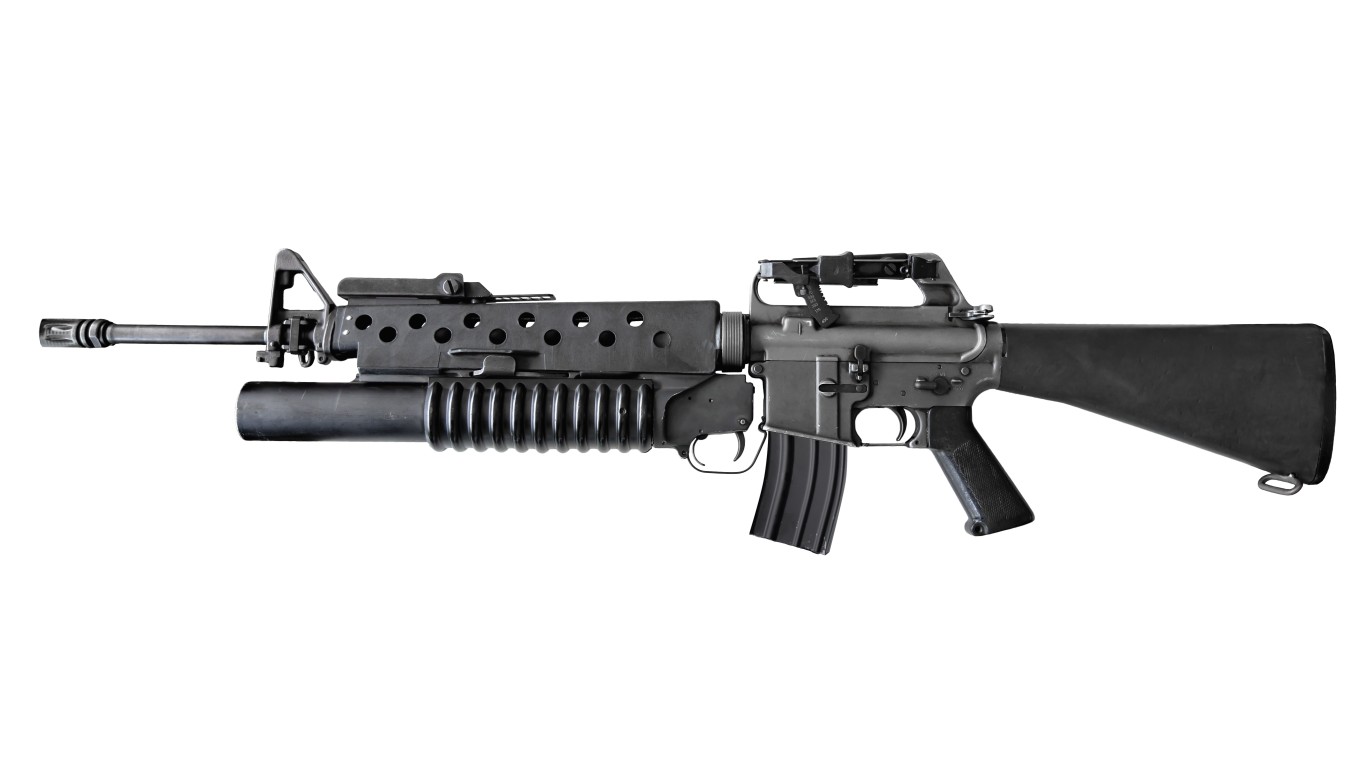
5. M16A1 Rifle (and subsequent variants)
> Entered service in: 1969
> Est. rate of fire: 700-950 rounds per minute
> Magazine: 20 or 30 round box
> Chambered for: 5.56Ã45mm NATO ammunition
> Notable conflict(s): Vietnam War, Desert Storm
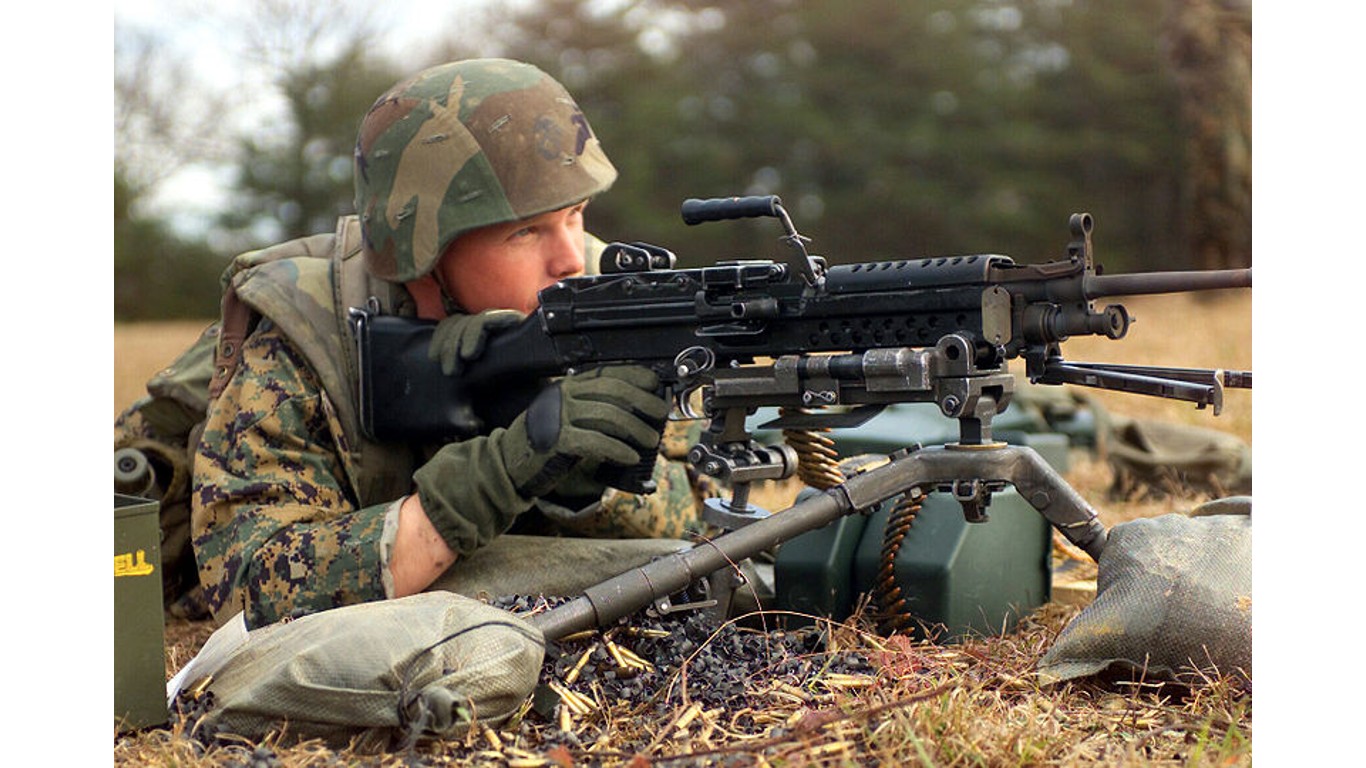
4. M249 Squad Automatic Weapon (SAW)
> Entered service in: 1984
> Est. rate of fire: 650-850 rounds per minute
> Magazine: 200-round disintegrating belt or 20 or 30 round box
> Chambered for: 5.56Ã45mm NATO ammunition
> Notable conflict(s): Wars in Iraq and Afghanistan
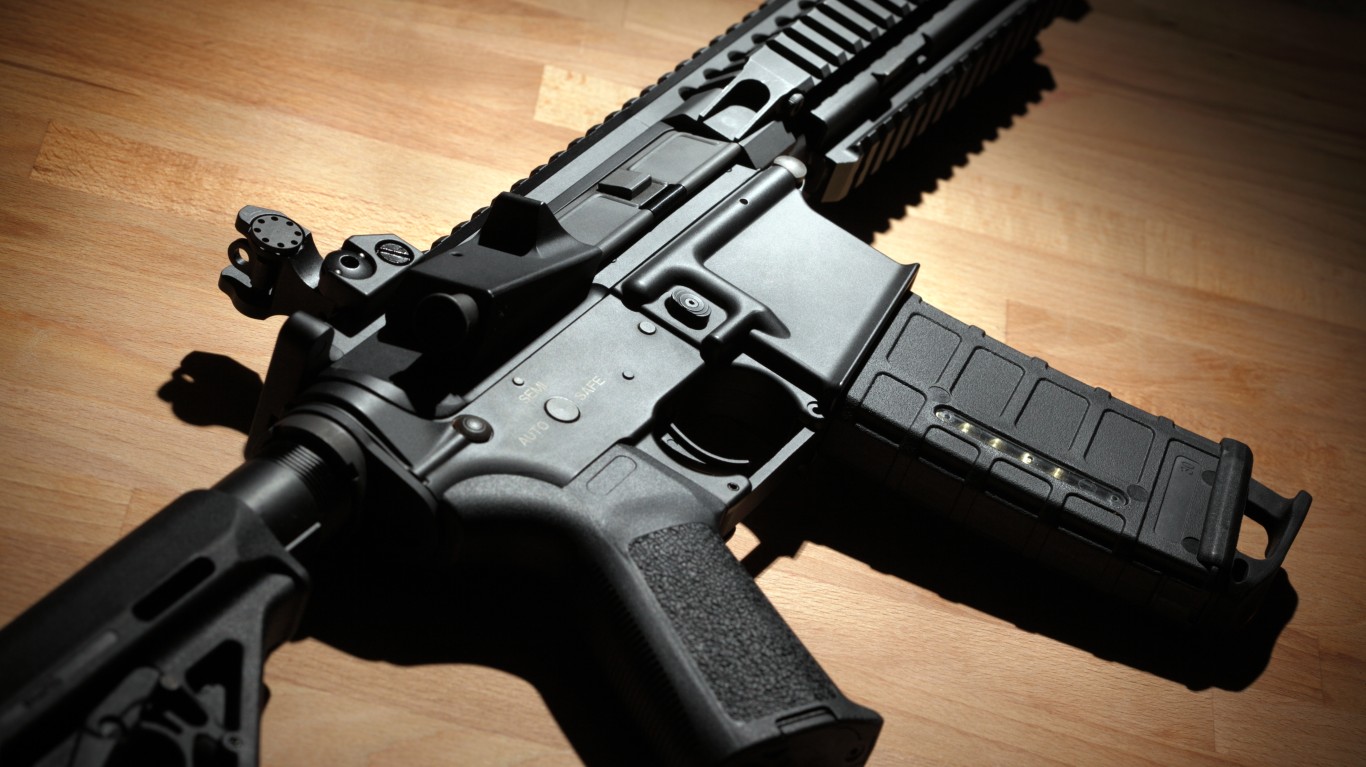
3. M4A1 Carbine (and subsequent variants)
> Entered service in: 1994
> Est. rate of fire: 700-950 rounds per minute
> Magazine: 30 round box
> Chambered for: 5.56Ã45mm NATO ammunition
> Notable conflict(s): Wars in Iraq and Afghanistan
[in-text-ad-2]

2. M7 Rifle
> Entered service in: 2022
> Est. rate of fire: 800 rounds per minute
> Magazine: 20 round box
> Chambered for: 6.8x51mm
> Notable conflict(s): N/A
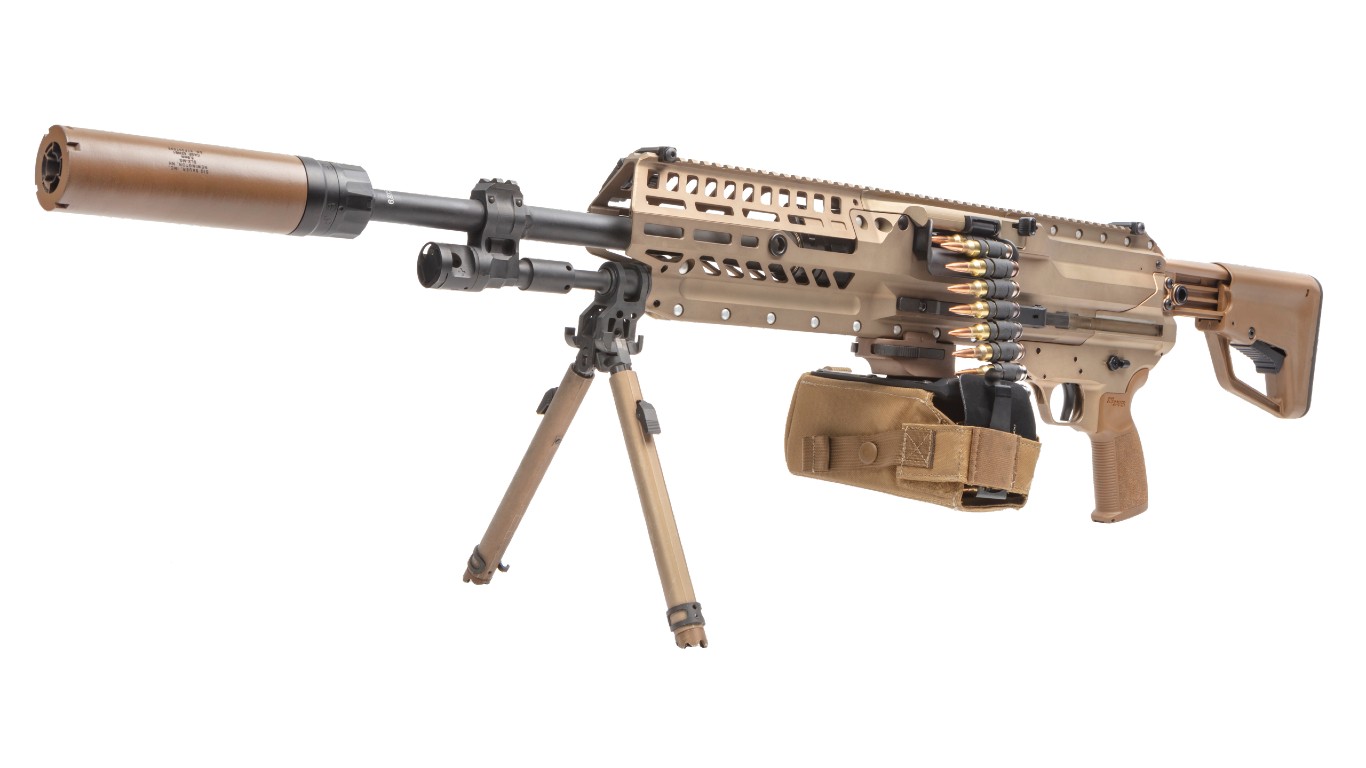
1. M250 Light Machine Gun
> Entered service in: 2022
> Est. rate of fire: N/A
> Magazine: 50 round disintegrating belt
> Chambered for: 6.8x51mm
> Notable conflict(s): N/A
Retirement can be daunting, but it doesn’t need to be.
Imagine having an expert in your corner to help you with your financial goals. Someone to help you determine if you’re ahead, behind, or right on track. With SmartAsset, that’s not just a dream—it’s reality. This free tool connects you with pre-screened financial advisors who work in your best interests. It’s quick, it’s easy, so take the leap today and start planning smarter!
Don’t waste another minute; get started right here and help your retirement dreams become a retirement reality.
Thank you for reading! Have some feedback for us?
Contact the 24/7 Wall St. editorial team.